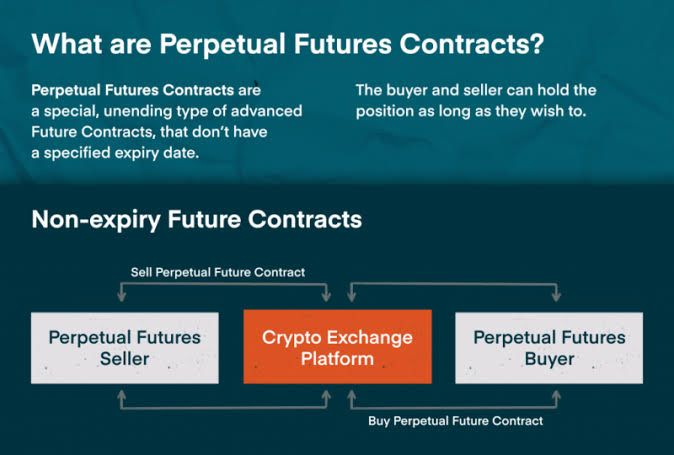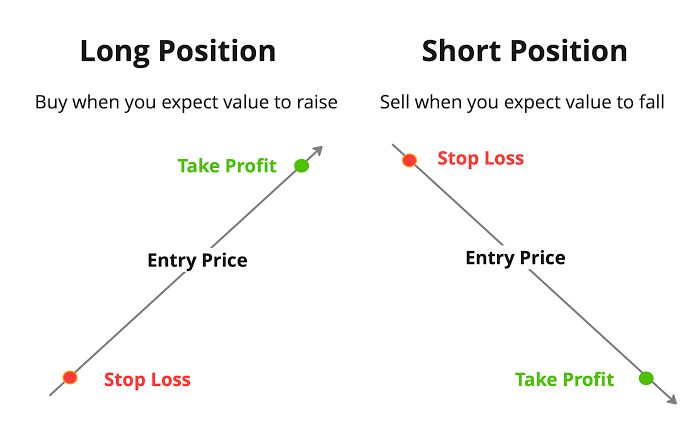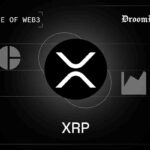Understanding the essential terminologies in crypto futures will help an individual achieve a remarkable trading result. It will give you a better idea of the market trends and prices, helping you to develop favorable trading strategies easily.
Futures contract usually includes trading Information such as the quantity of cryptocurrency, the price, and the expiration dates of assets to be traded in the future. The contract is often conveyed in certain terms, such as leverage, open interest, initial margin, and liquidation.
As reported by Investopedia, the first bitcoin futures contracts were listed on the Chicago Board Options Exchange (Cboe )in December 2017. Today, we have several exchanges handling crypto futures. To get the best of futures trading, you should familiarize yourself with futures contract terms.
What are Crypto Futures Terminologies?
Crypto futures terminologies are basically technical and non-technical words you will come across while trading crypto futures. Whether you are a crypto newbie or not, its essential to be familiar with these terms, as they can impact your trading success and risk exposure.
If you are a GenZ, you may be interested in trading on the innovation-oriented trading platform, Solus Finance. Despite still in Shardeum testnet, Solus Finance is recognized as a low risk futures trading platform with over 52+ active users on its app. We are convinced the reason for this rapid popularity is because the platform provides a community where users engage themselves, and find solution to any existing problem. This makes it easier for newbies to get on board and understand the technical trading terms.
Since trading terms contribute greatly to traders success, we decided to explain the eight key terms you will most likely come across while trading.
1. Perpetual Futures Contract
Crypto futures trading are usually documented in a contract containing an expiry date. Contrarily, the perpetual futures contract never expires so that traders can maintain their position in a crypto asset. The perpetual futures contract also differs from the traditional one in that traders don’t have to spend excessively on contract renewal.

Even though a perpetual futures contract is a permanent approach compared to traditional futures, they share certain similarities. They both offer similar benefits, such as standard contract sizing, leverage, and liquidity.
Before signing up with a trading platform, confirm if the platform allows perpetual futures trading. As of the time of writing, an outstanding trading platform, Solus Finance have just included perpetual futures in its Q2 2024 projects. Moreover, the trading platform promises to introduce more projects in 2024, for better trading experience. Some of these projects include; orderbook, mobile app launch, pricing oracle node runner, and the Solus broker program.
2. Leverage
Leverage is a word you will often come across in crypto futures. It means a trader has a great potential to earn more profit. However, traders are also at a larger risk of loss, especially when the market events don’t turn out in one’s favor.
Here is an example: if you place a 10x leverage on a Bitcoin futures contract, with a $150 initial margin, you can get up to $1,500 worth of futures contract. To effectively maximize your leverage, we encourage every trader to consider their expertise and risk tolerance level. Thus, a 2x or 5x leverage is ideal for a beginner.
Here, you can read about Bitcoin’s economy value and why its worth the investment.
3. Initial Margin
Margin is a term that often surfaces when discussing leverage, and it exists in two kinds: initial margin and maintenance margin. You will get to understand more about maintenance margin as you read further.
The initial margin describes a certain percentage of futures deposit required before owning a position. For example, if you want to hold a position of $1000 worth of bitcoin, with a 10x leverage, the initial margin would be $100. If you increase your leverage to 20x, the initial margin will be 5% of the bitcoin position value. Thus, the lower the leverage, the larger the initial margin.
This article, published by DroomDroom, explains margin and futures trading in detail.
4. Liquidation
Liquidation is a term feared by many crypto investors and traders. In crypto futures, liquidation is when traders are forced to sell their positions due to the inability to eradicate potential losses caused by insufficient margin.
Maintenance margin: The term “maintenance margin” may pop up during liquidation. This is when exchanges set a minimum price to retain a futures position. Thus, when traders’ account balance is below the set price, they face a tough decision between liquidating or increasing their capital.
Liquidation pace is usually uncertain, as it’s influenced by the amount of leverage used in the trade. For example, people with low leverage may not face liquidation as quickly as people with high leverage.
5. Open Interest
Open interest is a term used to describe the total number of open positions within a particular period. It’s usually calculated by subtracting the volume of closed trades from the total sum of opened trades. This concept is crucial for traders who want to understand the capital flow within the market system. Wherein, open interest increases when the capital inflow is higher than the capital outflow, and vice versa.
Open interest is an investment indicator, always pointing towards the most favorable market moment. Thus, when the open interest in the futures market is increasing, and prices are bullish, it catches the attention of crypto investors. This is because they consider the movements as a good investment indicator.
6. Long and Short Positions

Long and short positions are opposing terms that describe betting strategies within the futures market price movement.
In long positions, traders predict that the futures market will rise in price, making them bullish on the underlying asset. If the price rises as predicted, the traders earn their profit after closing their positions. This means the traders’ earnings are higher than the amount they bought the futures contract. On the other hand, they incur losses if the price goes down.
In the case of short positions, traders sell a futures contract, as opposed to the buying approach of long positions. Traders who sell the underlying crypto asset run a bearish market, believing the price would fall in the future. If the price decreases, as speculated, the traders earn profit by buying back the futures contract at a lower price.
7. Funding Rates
In perpetual futures contracts, funding rates prevent the market price from contradicting the underlying crypto asset price. Traders usually pay the funding rates in long and short positions, which vary with the market trend. To calculate the rates, exchanges subtract the crypto asset’s spot price from the perpetual contract price.
Since the funding rates are positive during the bullish market trend, long-position traders pay a premium to short-position traders. Hence, long position traders are confident that the market movement will be up for a long time and are willing to place some money on it. Likewise, short position traders pay long position traders during a bearish run, as the funding rate turns negative.
Check here for strategies to help concerned position traders overcome the crypto bear markets.
8. Take-profit and Stop-loss
Take-profit and stop-loss are risk management strategies usually planned by position traders. The take-profit strategy works by setting up an automatic position cancellation once the trade accumulates a specific profit. Meanwhile, this is also determined by the trader’s risk tolerance level.
The stop-loss is also a predetermined strategy, where traders decide to exit their positions after hitting a certain price level. The essence of the stop-loss is to save traders from huge losses. Overall, both take-profit and stop-loss strategies help traders react logically to unexpected market movements.
Understanding Trading Platform Terms
It’s essential to bear in mind that some trading platforms may have specific trading terms. This means that some terms may pertain to trading activity or investments you make on a particular trading platform. For instance, if you are trading on the Solus Finance platform, here are some terms you will come across:
Trading leagues: This form of trading experience allows traders to compete with other experts.
Trading badges: This term is used when a trader earns a high ROI from a particular investment. More interestingly, it creates access to exclusive Solus perks.
Here is a tweet from the Co-founder of Solus Finance, explaining the badge concept in picture.
Hav eyou checked your @SolusFinance badge? Each badge gives you some astonishing Power-ups. Keep trading pic.twitter.com/MrEw324yAV
— Sanghitaa De (BUIDLing SOLUS) (@dey_sanghita) October 2, 2023Brokers: Brokers are experts who earn a commission from Solus by trading for other people.
Conclusion
Futures trading can be quite complex and risky, especially when you lack the proper understanding needed to scale through. However, you can make better trading decisions once you understand the essential elements or makeup of futures trading. It will also help you to be relaxed and comfortable while implementing strategies that will work in your favor.



















